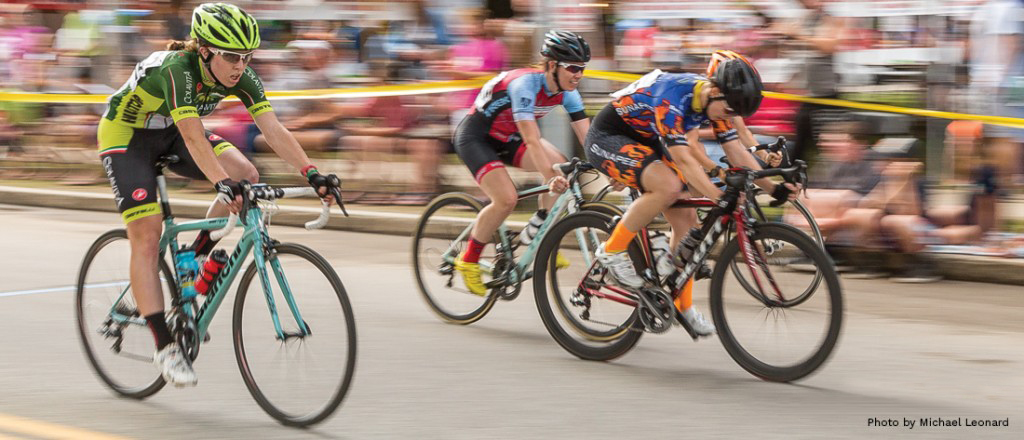
Get the Right Bike Fit: The Quest for Comfort and Performance
You’re sitting atop your new bike with the excitement of a little kid as you push off and clip in. After a few rides you notice your low back and knees are sore and you start to regret your new purchase or wonder if this sport is for you. Or maybe you’ve been riding competitively but can’t get to that next level because you just can’t seem to improve upon your power output.
In both situations a good bike fit could be the solution to the problem.
Every body is unique, so even if you have purchased the correct size bike, there are many variables that can be fine tuned to make the right size into the right fit. Just as a suit will require tailoring because of various body dimensions, a bike should likewise be tailored to an individual athlete. A properly fitted bike means correct joint position and biomechanics that will maximize comfort, aerodynamics, and performance.
Both recreational and competitive cyclists will benefit from a professional bike fit by a certified fitter. The certified bike fitters at OA Performance Center are all physical therapists with a deep understanding of the body, biomechanics, and how to best fit bike to rider.

Photo: Joey Walker
ASSESSMENT
A professional bike fitting begins with a detailed movement, mobility and strength assessment. The information taken from this evaluation is a key component in determining how to best fit the bike to the rider. For example, a hip restriction or impingement may result in a bowing of the leg at the top of the pedal stroke or a compensatory movement through the spine. Such information can cue us that the stance width likely will need to be wider or crank arm shorter to allow for better mechanics and pedal efficiency.
Once the physical assessment is complete, the client’s cleats are assessed for baseline measurements, and the rider then takes position and does what they love to do… ride! Unlike some fitting methods, we utilize slow motion video assessment and computer software that allows us to dynamically assess the rider’s posture as they power the bike. To ensure we are evaluating a cyclist’s true position when they ride, a dynamic fitting is critical. By using a dynamic fit, we can truly assess joint angles that might be misrepresented if measurements were taken from static positions. For example, a rider who sits at rest with her heel dropped down, but actually pedals with more of a toe point strategy will have very different knee angles at the bottom of the pedal stroke.
From these measurements careful adjustments are made to the bike, and then reassessments are compared to the initial data. Adjustments are made until all the components are in place and the rider is dialed into their ideal position to maximize comfort, power, and aerodynamics.
Not only do many cyclists report immediate improvements in comfort, there have also been numerous quantitative improvements seen in power output following a fitting. On occasions I’ve seen riders have a 5-10% improvement in their critical power, which experienced riders will know can take several weeks and even months of hard training to achieve.
KNEE PAIN
One side effect of a poorly fitting bicycle is pain. Whether from frame size, cleat position, reach, saddle, saddle height, or a number of other variables, the pain caused by a poorly fitted bike can have long term effects both on and off the bike. Hand and foot numbness, neck, arm, low back, and ankle pain are just a few ailments from which some cyclists suffer.
One of the most common complaints we see is knee pain. Although some athletes begin cycling to help their knees, this area is one of the most common cycling injuries. Knee position is dictated not only by saddle height, but by saddle fore/aft, cleat position, and the reach. Common fit related issues that involve pain in front of the knee are cranks that are too long, a saddle that is too low or too far forward, and cleats that are too far forward or rotated in a way that doesn’t match the athletes functional biomechanics (picked up in the initial screening process off the bike).
Pain on the sides of the knee is typically caused by saddle height, excessive or limited float of the pedal (again this is rider specific), and too wide or narrow of a stance position causing the knees to bow away from, or knock in toward, the bike.
Pain behind the knee can be the result of a saddle that is excessively high or too far back thus causing the cyclist to reach excessively at the bottom of the pedal stroke. Even the shape of the saddle can contribute to this if it blocks adequate pelvic position or places the spine in a position where nerves in the spine become irritated and refer pain down the leg.
THE RIGHT SADDLE
The saddle is one of the most commonly changed parts of a bike because so rarely does a stock saddle fit the rider. A cyclist who is uncomfortable in his/her saddle can be easily identified; usually these riders will demonstrate straight elbows as they push themselves back with a rounded spine in attempts to unload the perianal region. Numb genitals, burning pain, bruised buttocks, saddle sores, and inflamed skin are common problems. Many riders tell me they have just accepted that this is part of the sport. But these are not normal issues and need to be addressed.
A good fitting saddle should be comfortable and allow you to maintain a neutral spine position without the need for frequent position changes to unload sore areas. The past 15 years has seen dramatic changes in the saddle design, with models to fit a variety of anatomies. There are even a variety of nose-less designs that work well for many riders, especially those set up in aggressive time trial positions. Saddle choice is extremely individualized and trial and error is the key to finding the saddle that best suits you. At OA, we carry several popular saddles that encourage proper spine angles. During a fitting, a rider will be able to try them out to see which model is best. But before you go searching for saddles, make sure you have a pair of good quality bike shorts that fit correctly (tight with no wrinkles). Chamois lubricant is a good next step if saddle discomfort persists, and is strongly recommended to all riders.
Next time you ride, ask yourself if you truly are comfortable on your bike. Chronic nagging injuries that seem to creep up every season, limited gains in performance despite focused training, or finding it hard to sit in one place for an extended length of time are all signs that a fitting will likely benefit you. The certified bike fitters and physical therapists at OA are a local resource that is nationally recognized for their expertise in this area and have helped countless athletes find their ideal biomechanical fit position to maximize comfort and performance.
Story by Jared Buzzell. Jared is the physical therapy manager at the OA Performance Center in Saco, ME. He joined OA in 2000 and specializes in sports therapy with a special interest in the biomechanics of the endurance athlete. Jared is F.I.S.T. certified through Slowtwitch for bike fitting and combines this methodology, along with his knowledge of physical therapy and how to make biomechanically sound athletes to determine the optimal cycling position that balances comfort, aerodynamics and performance. He is an avid cyclist and triathlete himself and has competed in several races of varying distances including Ironman Lake Placid and the Ironman 70.3 World Championships.




